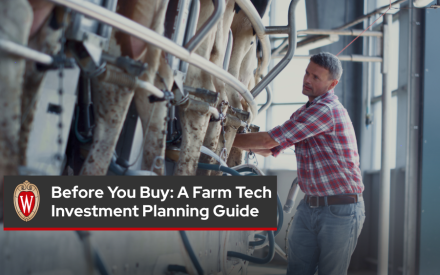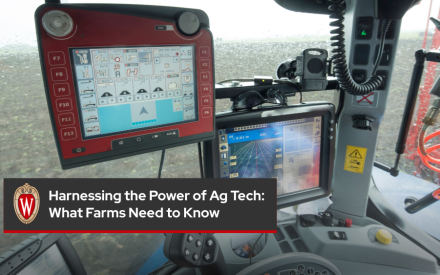Strategic thinking is the intuitive, visual, and creative process you use to make decisions about your farm business. Strategic thinking is all about thinking ahead, anticipating what your competition is going to do, and then taking risks to succeed. You’re thinking big, you’re thinking deep, and you’re thinking across time. You want to envision all possible problems, solutions and outcomes to a given problem, challenge or opportunity.
You’re using critical thinking to solve complex problems by diving into emerging issues, patterns and opportunities for your farm through the strategic planning process. A common tool you may have heard used during this process is a SWOT analysis. It’s important to start by thinking broad and deep, anticipating those possible outcomes from your actions or your inactions, and then choosing the best path forward.
The strategic planning process has three components:
- Strategic phase – long term
- Tactical phase – medium term
- Operational phase – short term
During the strategic phase, we talk about where we are, and we identify where we want to go. This is where we discuss what we currently have and what we want for the future. In the tactical phase, we address how we are going to get there and what we can and are going to do with what we have. Once we move to the operational phase, we’re putting our ideas into a plan. We’re saying, “let’s do this and see if it works.”
This process should focus on the long term, big picture thinking where we’re using proactive management tools to design our own future. If you can envision and craft a thoughtful plan for your future, you are more likely to make it happen.
There are 8 processes within the strategic planning:
- Establish Values and Purpose
- Craft Mission & Vision Statements
- Set Strategic Goals
- Inventory Resources
- Explore Possible Options
- Implement the Plan
- Monitor and Adjust
- Replan
In the strategic phase, we are going to establish our values and purpose, use those to craft our mission and vision statements, then use those to set strategic, long term goals for the farm. We also need to inventory our resources, so we know what we have to work with.
Then we move into the tactical phase of planning where we’re exploring all possible options out there. Here we might be developing alternative enterprise plans or exploring value added options and choosing the best path. In the final operational phase, we put the plan into action. We’re going to implement our plan, monitor it, and adjust as needed. Most importantly, however, is the final step which is to replan. This is not a one and done. That’s the cheap sell of the strategic planning process which can lead to less desirable outcomes.
Strategic planning is a constant process because you’re monitoring, adjusting, and you’re replanning as new situations arise using your established values, mission/vision statements and goals. If you continue to do this, it becomes easier to manage since you always have your future vision in the back of your mind. Before a plan can be effective, the strategies must be created, converted into action steps, communicated out, and then put to work.
The strategic thinking and planning process encourages you to establish your values and design your future rather than let the future happen to you.


 Identifying strategies to maximize potential and minimize risk
Identifying strategies to maximize potential and minimize risk Before You Buy: A Farm Tech Investment Planning Guide
Before You Buy: A Farm Tech Investment Planning Guide Balancing Technology and People: The Evolving Role of Farm Workers in Automation
Balancing Technology and People: The Evolving Role of Farm Workers in Automation  Harnessing the Power of Ag Tech: What Farms Need to Know
Harnessing the Power of Ag Tech: What Farms Need to Know


